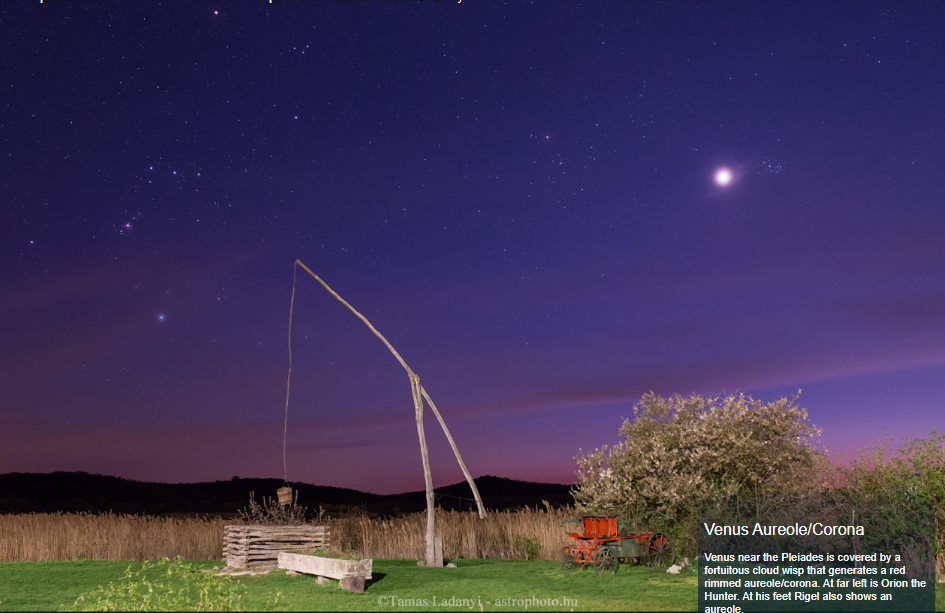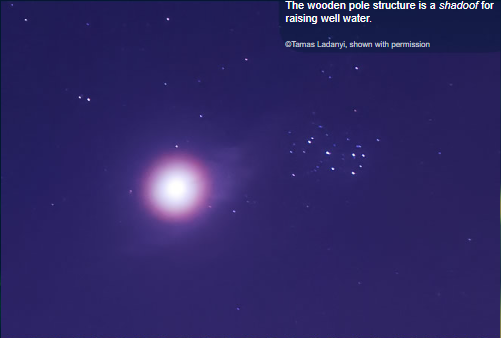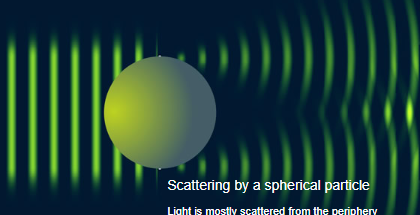Aureole around Venus - OPOD
The Enigmatic Aureole around Venus
The phenomenon of the aureole around Venus has captivated skywatchers and photographers alike. It occurs when Venus, the second planet from the Sun, aligns with certain atmospheric conditions, resulting in a stunning display of light diffraction. The aureole, also known as a corona, appears as a multi-ringed halo around the planet, often accompanied by a reddish rim. In this article, we will delve deeper into the intricacies of this atmospheric optics phenomenon and explore its underlying mechanisms.
Understanding Aureoles and Coronae
Aureoles and coronae are both optical effects caused by the diffraction of light. When sunlight encounters small atmospheric particles such as dust, cloud water droplets, or pollen grains, it scatters or diffracts in various directions. When the scatterers are of similar sizes, we observe a corona characterized by multiple concentric rings. On the other hand, a wide range of particle sizes gives rise to an aureole. The aureole around Venus exhibits a distinct feature - a red edge - which indicates that the scatterers responsible for its formation are relatively large.
The Role of Particle Size
The size of the atmospheric particles plays a crucial role in determining the visibility of aureoles and coronae. In the case of Venus, the scatterers are larger compared to those required for creating noticeable aureoles or coronae around celestial bodies like the moon or the sun. This is why the aureoles around Venus are relatively small and lack the pronounced multi-ring structure seen around these other celestial objects. Conversely, the large and diffuse coronae observed around the moon are unlikely to occur around Venus due to their faintness and diffusion.
Oval Aureoles and Alignment
In some instances, when viewing nearly point sources like Venus or Jupiter, oval-shaped aureoles may be observed. This peculiar phenomenon occurs when the scattering particles in the atmosphere exhibit alignment within the clouds, presenting a non-circular cross-section to the incoming light waves. The alignment of these particles causes the light to scatter in a manner that deviates from the typical circular pattern, resulting in the formation of oval aureoles.
The Scattering Process
When light encounters a spherical particle, most of the scattering occurs at the periphery, although some internal scattering may also occur in transparent media. To simplify the explanation, let's consider the scenario where light is scattered from just two points on the spherical particle. The outgoing spherical waves generated by these two points overlap and interfere with each other, producing a corona in the far field. This interference pattern gives rise to the characteristic rings observed in aureoles and coronae.
Unveiling the Mysteries of Atmospheric Optics
The allure of atmospheric optics lies in its ability to create mesmerizing displays of light and color. Through the study of phenomena like the aureole around Venus, scientists and enthusiasts gain a deeper understanding of how light interacts with particles in Earth's atmosphere. By unraveling the mechanisms behind these optical effects, we can unlock valuable insights into atmospheric composition, particle size distribution, and even weather patterns.
Conclusion
The aureole around Venus stands as a testament to the captivating beauty and complexity of atmospheric optics. This ethereal phenomenon, characterized by its red-rimmed halo, showcases the intricate interplay between sunlight and atmospheric particles. As we continue to explore and comprehend these celestial spectacles, we gain a greater appreciation for the wonders of our planet's atmosphere and the mysteries that unfold above us. So, keep your eyes to the skies and marvel at the enigmatic aureole around Venus, a sight that reminds us of the boundless beauty of our natural world.

Venus Aureole/Corona
Venus near the Pleiades is covered by a fortuitous cloud wisp that generates a red rimmed aureole/corona. At far left is Orion the Hunter. At his feet Rigel also shows an aureole.
An image from the Tihany Peninsula, Hungary by Tamas Ladanyi (astrophoto.hu). A single image with no colour processing.
The wooden pole structure is a shadoof for raising well water.
©Tamas Ladanyi, shown with permission

Aureoles & Coronae
Both are diffraction effects. Light scatters, diffracts, from small atmospheric particles - dust, cloud water droplets, pollen grains. When the scatterers are of the same size we see a multi-ringed corona. A wide size range gives an aureole. Somewhere betwixt the two extremes the aureole develops a red edge as here.
The scatterers here - cloud water droplets or ice crystals - are relatively large because the aureole is small. Smaller particles would be needed to make a noticeable aureole/corona around the moon or sun. Conversely, the large coronae seen around the moon would be exceeding rare around Venus because they would be too faint and diffuse.
From almost point sources like Venus or Jupiter we sometimes see oval aureoles. The scattering particles making those have some alignment in the clouds and present a non circular cross section to the incoming light waves.

Scattering by a spherical particle
Light is mostly scattered from the periphery although some internal scattering occurs for transparent media. For simplicity and clarity the diagram has light scattered from just two points. The outgoing spherical waves overlap and interfere to produce in the far field a corona.
Note: this article has been automatically converted from the old site and may not appear as intended. You can find the original article here.
Reference Atmospheric Optics
If you use any of the definitions, information, or data presented on Atmospheric Optics, please copy the link or reference below to properly credit us as the reference source. Thank you!
-
<a href="https://atoptics.co.uk/blog/aureole-around-venus-opod/">Aureole around Venus - OPOD</a>
-
"Aureole around Venus - OPOD". Atmospheric Optics. Accessed on December 24, 2024. https://atoptics.co.uk/blog/aureole-around-venus-opod/.
-
"Aureole around Venus - OPOD". Atmospheric Optics, https://atoptics.co.uk/blog/aureole-around-venus-opod/. Accessed 24 December, 2024
-
Aureole around Venus - OPOD. Atmospheric Optics. Retrieved from https://atoptics.co.uk/blog/aureole-around-venus-opod/.